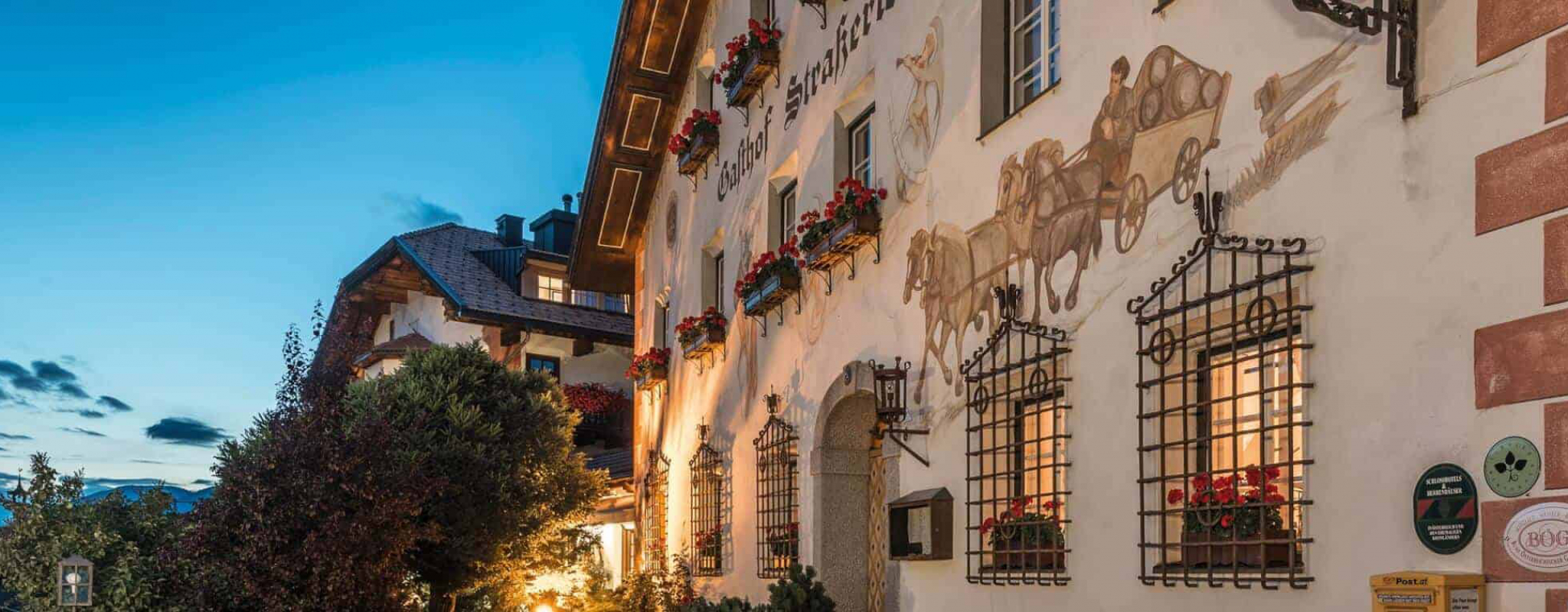
Strasserwirt **** Tyrolean Manor House
Tradition & history
In July 2009, the family of the contractor Johann Bachmann from Winnebach took over the Strasserwirt – a man who developed a very special love for this house for many years and was a partner for a long time. Since then, his daughters Judith and Astrid have run the hotel together. It is also their ambition to preserve and continue the tradition, what has grown and developed over many decades. With careful renovation work and a fine sense, both want to carry their version of the Strasserwirt into the future.
In its foundations, the house dates back to the 6th century. According to scientific research by the University of Vienna, old pot fragments found during reconstruction work stem from that time. You can visit them in one of the display cases on the high ground floor. A landslide in the 11th century buried large parts of the house in the Puster Valley, on the remains of which the present headquarters was built. The old restaurant showed the year 1744. At that time, the house was owned by Franz Xaver Ambrose Mayr, whose property was auctioned 25 years later because he had fallen into high debts during the construction of the Holy Trinity Church, which he financed significantly. From him comes the saying, which was written in his time in the restaurant: “I love such guests, who discuss kindly, who pay faithfully and honestly pay me and march peacefully.” The new owner became The “Strasserwirt” antonius Gasser, a citizen from Lienz, who was followed by his son Bernhard.
In September 1837, Andrä Bürgler acquired the property. Until 1872, when the Puster Valley Railway was built, the “Wirt an der Straße” was a stopover for haulers and a transshipment point for freight and goods. The name “Kofler Labe” (Labe = hallway) proves that the current farm building used to be a farm. This is the name of a storage room, over whose former entrance door the year 1619 still stands today. On 1 April 1955, Eckhard Bürgler took over the property from his uncle. His sense of preservation of tradition and his commitment to his heritage, which he saw as a commission, have created a work that harmoniously combines the new building built in 1986 with the tradition of the main house. He was succeeded by his eldest daughter Elisabeth. She led the fortunes of the Strasserwirt for 20 years.
Man is at the heart of all our thinking and acting.
Inclusive
Discover the Strasserwirt**** Inclusive services
Included
Services




